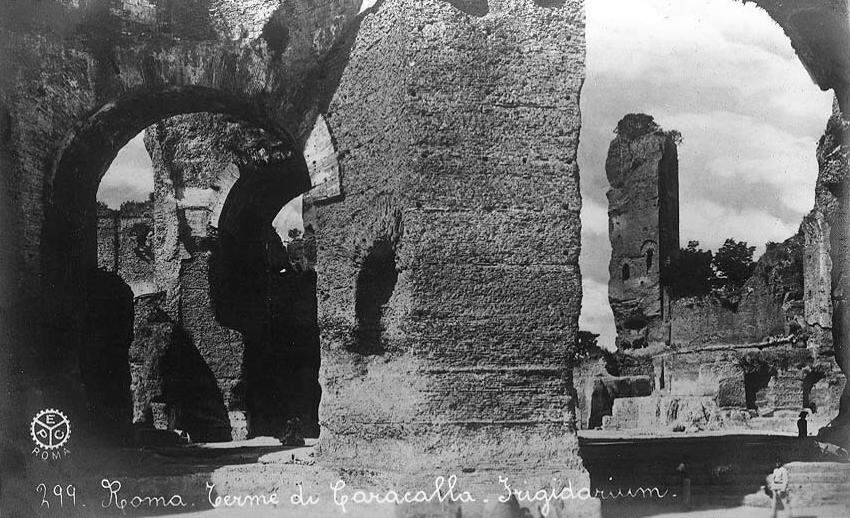
Ancient Rome: Architecture

Figure 1.--This commercial posrcard shows ruins of the Baths of Caracalla in Rome. This was the Frigederium. The Baths were oneof the most massive construction projects in history until the 20th century. Bright sunlit view, a boy pushing a wheel barrow seen in the shadows on the right hand side. Source: EPC Roma.
|
|
Architecture is another of the gret inheritances of Rome. Architecture is a major testament to the grandeur of ancient civilizations. In many cases it is one of the few artifact thst survived. In the case of Rime we have many other artifacrs such as law, Latin, art, and much else. But given the emene scale on which the Romans built. Roman architecture eclipsed that of all ther ancient civiliztions. Greek and Roman architecture are an important part of the classical building blocs of Western civilization. The Romans built on their Etruscan foundation. The Etrucans privided a wealth of knowledge essential for architectue which Rome in its early years did not possess. The Roman mastery of hydraulics (aquaducts) and the arch was fiunded on on an Etruscan base. The arch was of such monumental imoortbce in architcture that it is embeded in the nane of tge discipline. Later the Romans absorbed Greek and Phoenician styles which can be seen in both public and domestic buildings. Very little is known about architecture in the Reublican era becuse much of it was either destroyed by fire or replaced by more substantial construction during the imperial period beginning with Augustus. Although the Roman buildings got larger nd more complex, the basic unit od construction was the humble cky bricj, although concrete was also important. Roman roads and bridges are legendary. The technology of Roman road construction was important and not improved on until the 20th century, but tchnology is only part of the story. The roads radiating out from Rome played a major role in creating the modern map of Europe and helped connect Chester in northern Britain to Alexandria in the eastt. Many of the modern cities of Europe developed a settlements along these roads. Many Roman bridges were so architecturaly sound that they are still in use. Rome was the largest city in the world at the time and was the location of masive construction projects including not only the famous public buildings (temples, theaters, amphitheaters, baths,and markets),but also extensive blocs of apartments for the huge population. Roman architecture was not, however, confined to Rome. Architecture flourished throughout the Empire. Some of the best surviving examples of Roman architecture are today found outsude Rome in the former provinces.
HBC

Navigate the Historic Boys' Clothing Web Site:
[Return to the Main ancient Rome page]
[Introduction]
[Activities]
[Art chronologies]
[Biographies]
[Countries]
[Photography]
[Style Index]
[Bibliographies]
[Contributions]
[FAQs]
[Glossaries]
[Images]
[Links]
[Registration]
[Tools]
[Boys' Clothing Home]
Created: 6:33 AM 6/5/2012
Last updated: 6:34 AM 6/5/2012



